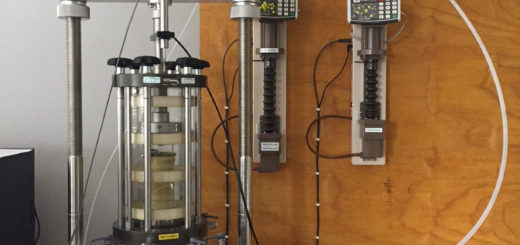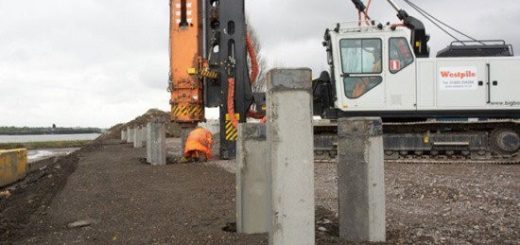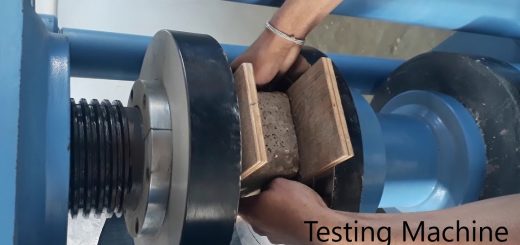13 Non Destructive Testing of Concrete
Non Destructive Testing of Concrete (NDT) of concrete is more common in the construction industry due to the requirement of verification of different parameters of hardened concrete.
Depending on the type of test, there is various equipment to be used as per its specification.
Different occasions that these tests are done can be identified as follows.
- Quality control of precast or in situ concrete construction
- As a measure to uncertainties about the acceptability of the materials due to the non-compliance with the specification
- As s confirmation for doubt concerning the workmanship in batching, mixing, placing, compacting or curing of the concrete
- Monitoring the strength development; early removal for formwork, application of loads early
- Determining the extent of cracks, voids, honeycombs
- Determining the position and quantity of reinforcements
- Determining the suitable location of destructive testing
- Assessing the potential durability of concrete
- Monitoring long term changes in concrete
As mention above, non-destructive tests are very useful in the construction industry due to the many advantages.
In addition, those tests can be done with very little cost when compared with destructive testing.
Non Destructive Tests
- Visual inspection: many things can be identified with visual inspection and this is the first test that is carried out before any kind of test when there is access.
- Half –cell electoral potential method: detect corrosion potential of reinforcement bars in concrete
- Rebound hammer test: use to find the surface hardness of concrete
- Carbonation depth measurement test: used to determine whether moisture has reached the depth of the reinforcing bars and hence corrosion may be occurring
- Permeability test: measure the capability of flowing water through the concrete
- Penetration resistance or Windsor probe test: measure the surface hardness of the concrete hence judge the strength of the concrete
- Cover meter testing: cover to the reinforcement and bar diameter can be measured
- Radiographic testing: used to detect voids in the concrete and the position of the stressing ducts
- Ultrasonic pulse velocity testing: used to find the compressive strength of the concrete through the measurements of the sound velocity.
- Tomographic modeling: uses the data from the ultrasonic transmission test in two or more directions to detect voids in concrete
- Impact eco testing: used to detect voids, delamination and other anomalies in concrete
- Ground penetrating radar or impulse radar testing: used to detect the position of reinforcing bars or stressing ducts.
- Infrared thermography: used to detect voids, determination and other anomalies in concrete and also detect the water entry points in buildings
VISUAL INSPECTION [most reliable Non Destructive Testing of Concrete]
Based on the condition of the structure and also as per the known failure criteria, judgment can be made.
For example, with the visual inspection, it is possible to decide the crack pattern of the beam is whether shear cracks or bending crack or torsional crack.
Similarly, based on the outcome of the inspection, judgments can be made.
REBOUND HAMMER TEST
Rebound hammer test is the one of more commonly used Non Destructive Testing of Concrete and it is used to check the compressive strength of the concrete.
Based on the rebound hammer number obtained for a concrete surface, compressive strength can be obtained from the empirical relationship developed for the rebound hammer.
Advantages of Rebound Hammer Test
- Simple to use. No special experience is needed to conduct the test
- Establishes uniformity of properties
- Equipment is inexpensive and is readily available
- A wide verity of concrete test hammers is available with an operational range of M10 to M70
Disadvantages of the Rebound Hammer Test
- Evaluate only the local point and layer to which it is applied
- No direct relationship to strength or deformation properties
- Unreliable for the detection of flows
- Cleaning maintenance of probe and spring mechanism
CARBONATION DEPTH MEASUREMENT TEST AS Non Destructive Testing of Concrete
Carbonation of concrete occurs when the carbon dioxide, in the atmosphere in the presence of moisture, reacts with hydrated cement mineral to produce carbonates, ex. Calcium carbonate.
The carbonation process is also called depassivation.
Carbonation penetrates below the exposed surface of concrete extremely slowly.
The time required for carbonation can be estimated knowing the concrete grade and using the following equation.
t = (d/k) 2
Where,
t – Time for carbonation
d – Concrete cover
k – Permeability
Typical values for the permeability of the concrete can be found from the following table.
| Concrete Grade | Permeability |
| 15 | 17 |
| 20 | 10 |
| 25 | 6 |
| 30 | 5 |
| 35 | 4 |
| 40 | 3.5 |
The significance of the carbonation is that the usual protection of the reinforcing steel generally present in concrete due to the alkaline conditions caused by hydrated cement paste is neutralized by carbonation.
Thus, if the entire concrete cover over the reinforcing steel is carbonated, corrosion of the steel would occur if moisture and oxygen could reach the steel.
The depth of the carbonation can be measured easily with the used of the phenolphthalein solution.
Spray the freshly exposed surface of the concrete with a 1% phenolphthalein solution.
The calcium hydroxide is colored pink while the carbonated portion is uncolored. There is another formula that can be used to evaluate the carbonated depth. With the help of this equation, the age of the concrete or the age of the building can be evaluated.
y = 7.2C2/ [R2 (4.6x-1.76)2]
Where,
y – Age of the building in years
x – Water cement ratio
C – Carbonation depth
R – Constant (R=αβ)
“R” varies depending on the surface coating on the concrete (β) and whether the concrete has been in external or internal service (α).
This formula is contained in the Japanese Construction Ministry publication “Engineering for improving the durability of reinforced concrete structures”.
α is 1.7 for indoor concrete and 1.0 for outdoor concrete.
β values are obtained from the following table.
| Finished Condition | Indoor | Outdoor |
| No layer | 1.7 | 1.0 |
| Plaster | 0.79 | |
| Mortar + plaster | 0.41 | |
| Mortar | 0.29 | 0.28 |
| Mortar + paint | 0.15 | |
| Tiles | 0.21 | 0.07 |
| Paint | 0.57 | 0.8 |
The phenolphthalein test is a simple and cheap method of determining the depth of carbonation in concrete and provides information on the risk of reinforcement corrosion taking place.
The only limitation is the minor amount of damage done to the concrete surface by drilling or coring.
Source: Internet and reference books



